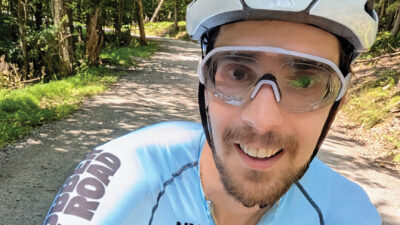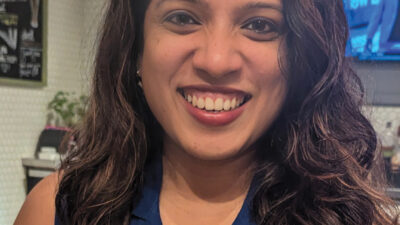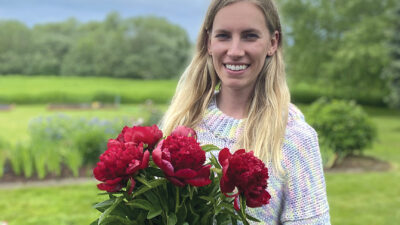International Women in Engineering Day, celebrated on June 23, 2018, celebrates the achievements of females in various engineering industries. Here’s a Q&A with Mallika Bandyopadhyay.
To honor International Women in Engineering Day, Consulting-Specifying Engineer asked select people to answer questions about their background and mentors and their career path. Here’s a Q&A with one of them.
Name: Mallika Bandyopadhyay
Position: Senior Power System Engineer, Schneider Electric, Alpharetta, Ga.
Education:
- BE (Concentration: Power Engineering): University of North Bengal, India
- Masters’ in Management Science (Supply Chain Management): University of Texas at Dallas
- Masters’ in Applied Statistics: Kennesaw State University
- PE (Power)
- Certified Six Sigma Green Belt
- Certified SAS Basic Programmer
- Construction Manager in Trainee (CMIT)
- Pursuing Masters’ in Electrical Engineering (Power), New Mexico State University
CSE: What or who was your biggest motivation in becoming an engineer?
Bandyopadhyay: Because of my mother and my mathematics teacher I studied electrical engineering. Having been comfortable with mathematics from a young age, I had always toyed with the idea of pursuing engineering yet unwillingly expected that I might still end up in a field conventionally “appropriate for a woman.” Although my parents had raised me with the same access to opportunities as those that my brothers received, my father did not display any obvious keenness on me entering the field of engineering. Knowing how competitive the engineering field would be to break into for a woman, he strongly urged me to pursue other more accepted courses of study. Yet finally, at the behest of my mathematics teacher—who knew my superior quantitative abilities—and of course with hushed encouragement from my mother, who knew the dream that I harbored inside me, I sat for the national engineering entrance exam and passed with flying colors.
This eventually launched my career onto a trajectory that I had thought I would only be able to dream! This taught me two very important lessons—first, it showed me the power of dreaming when one works for it and second, it imbued a sense of confidence in me that told me that I was capable of achieving any goal that I would set for myself.
CSE: What advice would you give someone in high school about becoming an engineer? What resources or references would you suggest they look at?
Bandyopadhyay: High school is a trying time for everyone. You not only have to grow up, you also have to think about where you want to go in the future or what career path would work best for your skills and interests. To those in high school considering engineering as a course of study or as a future career option, I would say, talk to your career counselors, talk to as many engineers as you can have access, and preferably find a role model in one of them and then try to dip your toes into several fields of engineering as you can before you have to make any final or lasting decisions. The field of engineering is vast and multifaceted and is expanding daily with the advent of new technologies, and you will have to find a niche of your own in which your interests and skills synergistically mesh. In order for this to happen however, you must first learn about yourself, know your likes, dislikes, natural talents and above all identify and try out your abilities in the quantitative fields. Once you have an idea of who you are and what you can offer as a potential engineer, look into the more technical aspects of career selection such as programs or specific areas of study in engineering.
CSE: While you were in college, what helped shape your decision to specialize in your area of expertise?
Bandyopadhyay: During our orientation on undergraduate program, one of my professors talked on electrical power engineering. His enthusiasm for the subject was so contagious that within minutes of hearing him discuss his passions and his experience in the field, I began wanting to pursue power engineering, which only grew with time. I am happy to say that this passion that germinated in me on that day is now well and happily thriving within me and my work.
CSE: Do you have advice for young women just starting in the engineering field?
Bandyopadhyay: As a young lady when you are starting in a career in engineering, the first thing I would like you to is that you never listen to the clichés that society implicitly imposes on us—we are the most creative people who can construct, nurture and achieve our dreams. Make your profession your passion. Being a woman in STEM, we start with the cards stacked against us and although this may seem daunting, do not let it deter you from dreaming and achieving your goals. Know that there are many initiatives now to support women in engineering and to equalize the gender distribution in the field and you should feel free to know about them and access them as you deem fit.
As a young woman in engineering you might face expectations, environments and circumstances which your male counterparts will never have to deal with. Just remember to hold on to your dreams, speak up and power through any obstacles that you face. Respect yourself and your decisions, and never let anyone doubt your instincts, dreams, work ethics and capabilities.
A female engineer has to prove her knowledge and capability at every step of her professional life—this is sad but true. Sometimes you will not be heartily inosculated into male colleague groups, sometimes you will not be privy to bits and pieces of critical organizational information that all your male would appear to be privy in a natural manner. As a female engineer you may have to work harder and longer to make your point and be professionally respectable and successful. There would be implicit biases and discriminations, and there will be attempts to isolate you in the minority. Do not be disheartened, just use them to remain steadfast in your resolve and efforts. I can vouch that every bit of these experiences just made me stronger at the end!
CSE: Describe an unusual project you worked on. What were the risks or challenges you took? Outline the success story.
Bandyopadhyay: I will delineate 2 projects below. First the one that was the most challenging in terms of project engineering grits and second, the one that required me to engage and deploy highly sophisticated quantitative knowledge and analysis skills:
I consider my first hydro-electric project in Southeast Asia as my most challenging project. It was an internationally aided project, nestled deep inside the Himalayas in the Kingdom of Bhutan. I was responsible for the technical coordination and project schedule management between the benefactors, owners, OEM suppliers, and contractors. Further complicating the already onerous responsibility around multi-prong coordination, schedule management became exceptionally challenging given that the project site was located in an area where infrastructural facilities were virtually nonexistent. Difficult terrain conditions forced changes in design execution at site as well. Among other things, I met these challenges by keeping myself in constant contact with all the stakeholders of the project and by implementing several non-conventional modes of logistics of transporting machinery and managing inventory at-site including those of transporting totally knocked down (TKD) machines and switchgears, which were later assembled at site.
I was privileged to work in a team of three to assess the improvement in reliability of the distribution system of a large electrical energy provider in the Southwestern United States should their distribution voltage be raised from 13 to 35 kV. Beyond normal scope and practices of such analysis, our stylized model additionally included distribution feeder cost and cost of interruptions to parameterize the cost effectiveness aspects of the above change in voltage. Finally, a simple payback period was calculated to assess the investment efficacy of the proposed voltage increase towards higher levels of reliability.
CSE: Are there professional development tips you can offer other female engineers? What helped lead to your success? This might include public speaking courses, working with a mentor, or some other advice.
Bandyopadhyay: I will ask other professional female engineers to speak up, express their confidence and look for and strive to acquire leadership positions. Always follow the changes and trends in technology and equip yourself accordingly. Embrace your associations and feel lucky if you have a mentor. Having a mentor at your workplace can be the key to a woman’s success.
CSE: Many manufacturers want to be seen as the go-to resource for mechanical, electrical, plumbing (MEP), or fire protection engineers. How do you work with these consulting engineers to ensure you’re seen as a thought leader?
Bandyopadhyay: I endeavor to come across as a thought leader by explaining the genesis and development of the technology under discussion, innovations that are happening now, the latest products and services that are available in the market and by comprehensively assessing and explaining how the environments and circumstances of a business case dictates the utilization of a technology.
CSE: In your job, what’s the one thing you are most proud of? What do you want people to take away about you and your profession after meeting you only briefly?
Bandyopadhyay: What people will take away about me depends on who I am meeting with. I want my customers to know me as a sincere, honest, helpful and knowledgeable engineer who is ready to collaborate and solve their problems and issues in the most cost effective and technologically efficacious manner. No one knows everything and everyone knows that. So, I endeavor to appear innately resourceful by exuding my knowledge, skills, and research capabilities and by my collaborative attitude both inside and outside my organization.



